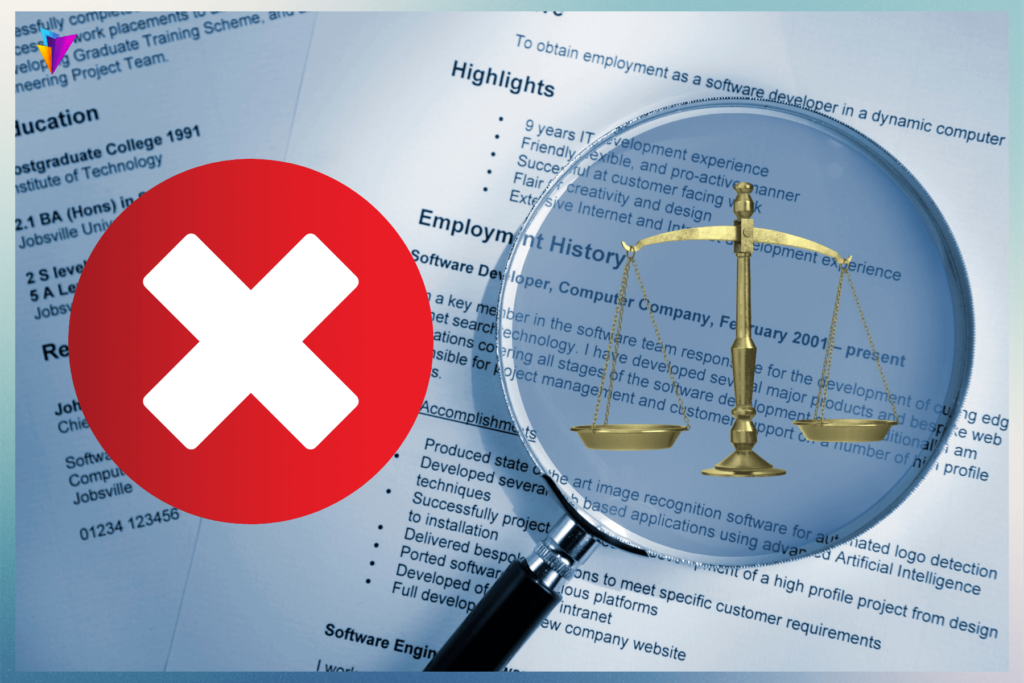In an ideal world, hiring decisions would be based solely on a candidate’s skills, experience, and potential. However, address bias—a form of geographic and socioeconomic discrimination—continues to influence employment opportunities in subtle yet impactful ways. Where a candidate lives can unconsciously shape an employer’s perception of their qualifications, reliability, and suitability for a role, leading to hiring disparities that disadvantage talented professionals.
So, this article explores how address bias manifests in hiring, its socioeconomic implications, the impact on workforce diversity, and actionable strategies to create a more equitable recruitment process.
Understanding Address Bias in Hiring
Address bias refers to the preference or discrimination that occurs based on a candidate’s geographic location. This bias is often rooted in assumptions about social class, accessibility, and professional networks rather than an applicant’s actual abilities or experience.
3 Common Forms of Address Bias in Hiring
Employers may consciously or unconsciously favor certain candidates based on their location. So, here are three common ways in which address bias influences hiring decisions:
1. Urban vs. Rural Address Bias
Candidates from urban areas are often perceived as more connected, resourceful, and adaptable because of their proximity to business hubs. Moreover, employers in major cities may assume that urban applicants have access to better networking opportunities and professional development, making them preferable hires.
How it affects candidates:
- Firstly, applicants from rural areas may be viewed as less experienced or lacking the same exposure as their urban counterparts.
- Companies in metropolitan areas may favor urban candidates, assuming they are more in tune with industry trends.
- Rural candidates might be overlooked for roles that involve in-person collaboration, even when remote work is a viable option.
2. Prestigious vs. Economically Disadvantaged Neighborhoods
Certain addresses carry socioeconomic connotations, leading employers to make snap judgments about candidates based on where they live. Resumes listing addresses in wealthier or well-known neighborhoods may be viewed more favorably, while candidates from lower-income areas may experience bias.
Examples of impact:
- A candidate from a prestigious area may be assumed to have attended elite schools or had superior career opportunities, even if their qualifications are identical to another candidate’s.
- Applicants from low-income neighborhoods may face subconscious bias, with employers making unfounded assumptions about their education level, reliability, or social background.
3. Regional Stereotypes and Industry Bias
Certain regions develop reputations based on dominant industries or historical economic trends. Candidates from areas associated with thriving industries may be favored, while those from regions facing economic struggles may encounter bias.
Real-world examples:
- A tech company may prefer candidates from Silicon Valley over those from smaller towns, assuming they have more expertise in cutting-edge technology.
- An applicant from a region known for manufacturing jobs might be considered less suitable for a finance or corporate leadership role, regardless of their qualifications.
- Lastly, employers may hesitate to hire candidates from areas known for high crime rates, unfairly associating their address with personal character or workplace behavior.
Socioeconomic Implications of Address Bias
Address bias in hiring does more than limit individual opportunities—it also reinforces wider socioeconomic disparities.
1. Limited Access to Employment Opportunities
Candidates from economically disadvantaged areas often face challenges in securing interviews, let alone job offers. If employers subconsciously exclude candidates based on their addresses, individuals from lower-income communities struggle to break the cycle of poverty.
2. Economic Disparities and Regional Inequality
When companies favor candidates from specific areas, they contribute to economic polarization. Wealthier regions continue to thrive as job markets expand, while economically struggling areas fall further behind due to limited employment prospects.
3. Reduced Workforce Diversity
A diverse workforce benefits companies by fostering innovation, creativity, and problem-solving. However, when address bias limits hiring diversity, organizations risk becoming homogeneous and disconnected from the realities of broader society.
How Address Bias Affects Workforce Diversity and Employer Brand
Beyond economic and social impact, address bias can directly influence a company’s reputation and talent acquisition efforts.
1. Reduction in Diversity of Perspectives
When companies overlook candidates from diverse backgrounds, they inadvertently narrow their talent pool. Additionally, diverse perspectives drive innovation, improve decision-making, and enhance problem-solving. Thus, address bias can prevent organizations from accessing unique skills and fresh insights.
2. Barriers to Inclusivity and Social Mobility
Address bias disproportionately affects individuals from underprivileged backgrounds, making it harder for them to secure jobs and move up the economic ladder. Moreover, hiring decisions based on assumptions about geography entrench existing social inequalities.
3. Challenges to Cultural Competency
Companies that lack geographic and socioeconomic diversity may struggle to understand the needs of a diverse customer base. Furthermore, a workforce composed solely of individuals from affluent areas may lack cultural awareness, leading to miscommunication and missed opportunities for business growth.
4. Damage to Employer Brand
Modern job seekers value inclusivity and equal opportunity. If a company gains a reputation for biased hiring practices, it can:
- Deter diverse talent from applying.
- Harm relationships with customers and clients who prioritize diversity.
- Limit collaboration opportunities with organizations that champion equal employment practices.
5 Strategies to Neutralize Address Bias in Hiring
Eliminating address bias requires proactive changes in recruitment policies. So, here are five effective strategies companies can adopt:
1. Implement Blind Recruitment Practices
Blind recruitment removes identifiable information, such as addresses, from resumes during the initial screening process. This ensures that employer’s hiring decisions are based on qualifications and experience rather than socioeconomic assumptions.
2. Standardize Evaluation Criteria
Creating structured, transparent hiring criteria helps ensure fairness. Develop a scoring rubric based on measurable skills, competencies, and relevant work experience rather than subjective factors like location.
3. Increase Awareness and Bias Training
Companies should invest in unconscious bias training for hiring managers and recruiters. Educating decision-makers about address bias and its consequences fosters a culture of fairness.
4. Expand Geographic Sourcing Strategies
To attract diverse candidates, companies should:
- Use nationwide or remote job postings rather than limiting searches to local talent.
- Partner with organizations in underrepresented regions.
- Attend job fairs in economically diverse communities.
5. Implement Policy and Culture Changes
Companies must integrate diversity, equity, and inclusion (DEI) policies into their hiring framework. Regular audits of hiring practices can help identify and address biases, ensuring a long-term commitment to fair employment practices.
Conclusion: Creating an Equitable Hiring Process
Address bias is a subtle yet powerful barrier to fair employment opportunities. By recognizing and addressing this issue, companies can build a more inclusive and dynamic workforce.
Organizations that prioritize skills and experience over geography will not only enhance workforce diversity but also create a more socially responsible and forward-thinking corporate culture.
By adopting blind recruitment, standardizing hiring criteria, offering bias training, expanding recruitment strategies, and fostering a culture of inclusivity, businesses can ensure that every candidate has an equal opportunity to succeed—regardless of where they live.










